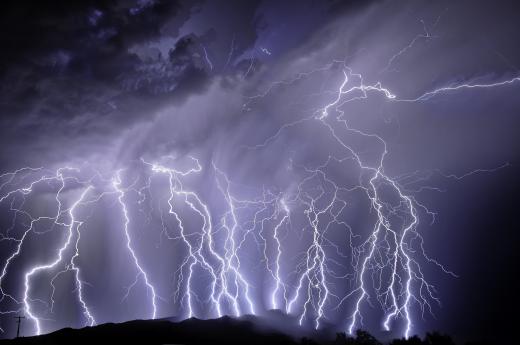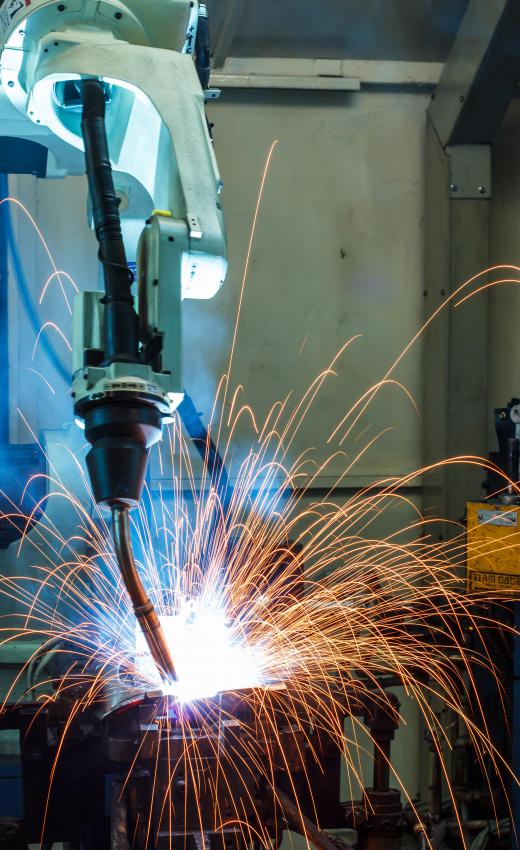An electric arc is the flow of electric current present between two electrodes, formed when electricity jumps from one electrode to another. The connection made from the jump creates a "bridge" or arc of electrons visible to the eye. This arc contains extremely high heat and brightness, ideal for welding and lighting.
The temperature and luminosity of electric arcs mostly depend on two factors: type of gas and pressure. When the electric current travels in the gap between the electrodes, it heats the air around it. By changing the chemical composition of the air, the arc's heat and brightness can be altered.

When the arc is encased in a container, made of glass or plastic depending on its use, the air pressure surrounding the arc can be controlled for specific purposes. The air can be removed to create a vacuum, or a gas can be added to create a high pressure arcs. Both are used in different types of lighting.
The Tesla coil is a type of electric arc that works in regular atmospheric pressure. Its inventor, Nikola Tesla, is generally considered the predecessor for the image of a "mad scientist." This image was conjured when pictures showed him conducting experiments under the light of electric arcs operating in the background.
Lightning is a naturally occurring electric arc that provides the same spectacle. The electricity created in the air travels to the ground or other clouds. This forms an electrical arc flash that can reach several yards (meters) long.

The electric arc furnace uses the high heat in the arc to melt metals. Electricity passes through the metals, which heats them to melting point. Scrap metals are commonly melted using this method. Energy from the furnace is usually lower compared to a blast furnace. The ability to quickly stop and start an arc furnace enables a steel mill to change the furnace load according to its needs.
Welders use the same principle for electric arc welding. Metal rods are electrified by a power supply, and an arc is formed when the rods come into contact with another metal. Enough heat is generated to melt the two metals. The welders then use this process to weld the two metals together.
One interesting use for electric arc is on plasma speakers. Instead of using traditional speakers to produce sound, the majority of plasma speakers use ionized gas or live electricity. The expansion and contraction of the arc when a current travels through it disturbs the air. This, in turn, produces sound. It is said that plasma speakers produce a clearer sound by not having the physical limitations many other speakers have.
